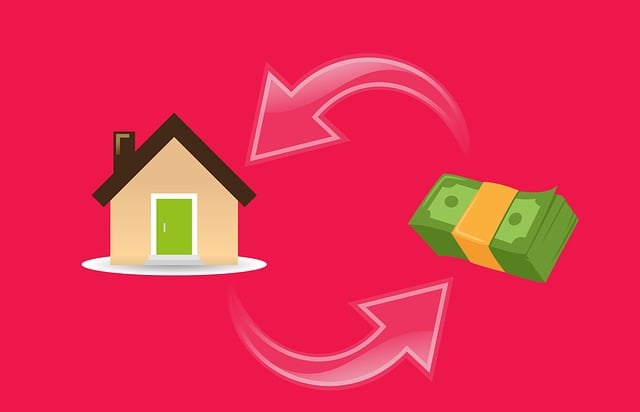Fire damage assessment is critical in selling a fire-damaged home in California, significantly impacting property value. Appraisers evaluate structural integrity, needed repairs, and market trends, considering both visible and hidden damage. Tight real estate regulations necessitate understanding these nuances for informed decision-making by homeowners and buyers. Post-fire preparation includes documenting damage, addressing safety hazards, and initiating cleanup. Accurately assessing post-fire value involves evaluating structural damage, safety concerns, repair costs, and market perceptions. Legal and insurance complexities require careful navigation, with homeowner rights, buyer protections, and insurance coverage to consider. A strategic approach involving documentation, appraisal, marketing transparency, and legal compliance is key to a successful sale in California's real estate market.
After a devastating fire, selling your California property can seem daunting. This comprehensive guide navigates the intricate process of assessing and selling a fire-damaged home. We delve into crucial aspects, from understanding fire damage assessment standards in California to the legal considerations that come into play.
Learn how professional property appraisers play a vital role in post-fire sales, and discover practical steps to prepare your home for appraisal. We also explore common challenges and provide expert tips on marketing your California fire-damaged property to maximize its sale potential.
- Understanding Fire Damage Assessment in California Real Estate
- The Role of Property Appraisers in Post-Fire Home Sales
- Step-by-Step Guide: Preparing Your Home for Appraisal After a Fire
- Common Challenges and Considerations During Fire Damaged Home Appraisals
- Legal and Insurance Aspects of Selling a Fire-Damaged Property
- Maximizing Your Sale: Tips for Marketing and Presenting Your California Fire Damage Case
Understanding Fire Damage Assessment in California Real Estate

Fire damage can significantly impact a property’s value, making it crucial for both homeowners and potential buyers in California to understand how this assessment works when considering how to sell a fire-damaged home. The process involves a meticulous evaluation of the extent of the damage, taking into account structural integrity, repairs needed, and the overall market value before and after the incident. Professional appraisers are key players in this process, utilizing their expertise to navigate the complex landscape of fire damage assessment.
In California, real estate transactions are tightly regulated, and fire-damaged properties require special consideration. Appraisers must assess not only the visible repairs but also potential hidden damage that might have occurred behind walls or under flooring. They consider market trends, comparable sales data, and the unique challenges of selling a fire-damaged home. Understanding these nuances is essential for both parties to make informed decisions, ensuring a smooth transition while considering how best to proceed with the sale.
The Role of Property Appraisers in Post-Fire Home Sales

After a fire, homeowners in California often find themselves navigating an unfamiliar and complex process when considering how to sell a fire-damaged home. This is where property appraisers play a pivotal role. They are the professionals tasked with determining the current market value of a property, even one that has sustained significant damage.
These experts assess the extent of the fire’s impact on the structure, its systems, and overall livability. Their detailed reports help both insurance companies in settlement processes and sellers in setting realistic expectations for the post-fire home sales market. By providing an unbiased evaluation, appraisers ensure that transactions are fair, offering a crucial service that can facilitate the healing process for fire-affected communities.
Step-by-Step Guide: Preparing Your Home for Appraisal After a Fire

After a fire, preparing your California home for an appraisal can seem daunting, but with careful planning and these steps, you can make the process smoother. First, document the damage by taking photos and videos of affected areas. This will help both you and the appraiser understand the extent of the fire’s impact. Next, ensure safety by addressing any hazards; this may include structural repairs or removing hazardous materials.
Once safety is secured, start the cleanup process. Remove smoke and water-damaged items, and begin restoration efforts if possible. Keep detailed records of all repairs and materials used. During the appraisal, be prepared to discuss these steps and provide documentation to support your efforts. Remember, a well-prepared home demonstrates your commitment to recovering from the fire, which can positively impact the selling process in California.
Common Challenges and Considerations During Fire Damaged Home Appraisals

Selling a fire-damaged home in California can be a complex process, filled with unique challenges that require careful consideration from both homeowners and appraisers. One of the primary hurdles is accurately assessing the property’s value after a fire. Appraisers must navigate the aftermath of the disaster, considering not only structural damage but also potential safety hazards and the cost of repairs.
They’ll examine the extent of the fire’s reach—from charred walls and melted flooring to blackened ceilings and damaged electrical systems. Each component contributes to the overall value, and appraisers need to discern between what can be restored and what needs replacement. Additionally, they must factor in potential market perceptions, as buyers may have concerns about living in a previously fire-damaged home, which could impact the selling price.
Legal and Insurance Aspects of Selling a Fire-Damaged Property

Selling a fire-damaged property in California involves navigating legal and insurance complexities, which can be challenging for homeowners. The first step is to assess the extent of damage and understand your rights as a seller. According to California law, buyers have certain protections when purchasing a distressed property, including those affected by fires. Homeowners should consult with a real estate attorney to ensure they comply with all legal requirements, such as disclosing any known issues to potential buyers.
Insurance plays a crucial role in the process. Policies vary, so homeowners must review their coverage carefully. If the fire was covered under your policy, you’ll need to coordinate repairs and potentially deal with insurance adjusters. Additionally, be aware that selling a damaged property might trigger specific insurance provisions or requirements for rebuilding, which can impact your sale. Understanding these aspects early on will help streamline the process of how to sell a fire-damaged home in California.
Maximizing Your Sale: Tips for Marketing and Presenting Your California Fire Damage Case

Selling a fire-damaged home in California can be challenging, but with the right approach, it’s possible to secure a fair sale quickly. The first step is to thoroughly document the damage caused by the fire and hire a qualified property appraiser who understands the ins and outs of California’s real estate market. They will provide an accurate assessment, which is crucial for determining the best listing price.
When marketing your home, highlight any recent repairs or renovations made post-fire. Ensure potential buyers are aware of the safety measures taken to restore the property to its pre-damaged state. Presenting a well-organized and transparent case will maximize your chances of selling, attracting interested buyers who appreciate honesty and thoroughness in such situations.
Selling a fire-damaged home in California involves navigating several complexities, from legal considerations to presenting your case effectively. By understanding the role of property appraisers and mastering the appraisal process, you can ensure a smoother transition. With the right preparation and knowledge of the challenges ahead, you’ll be better equipped to maximize your sale potential, turning a potentially daunting situation into a successful real estate transaction.






